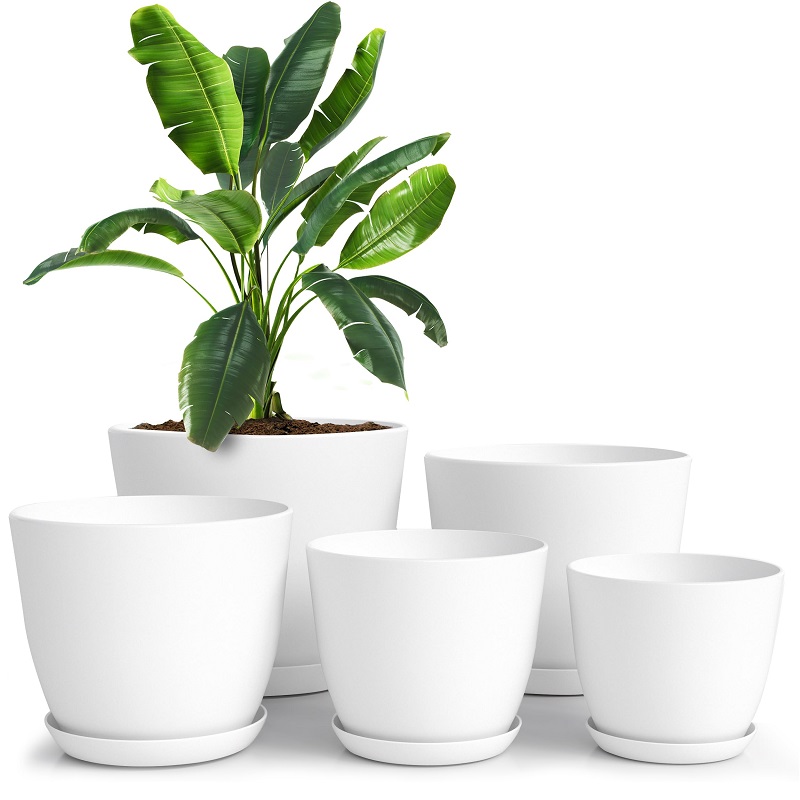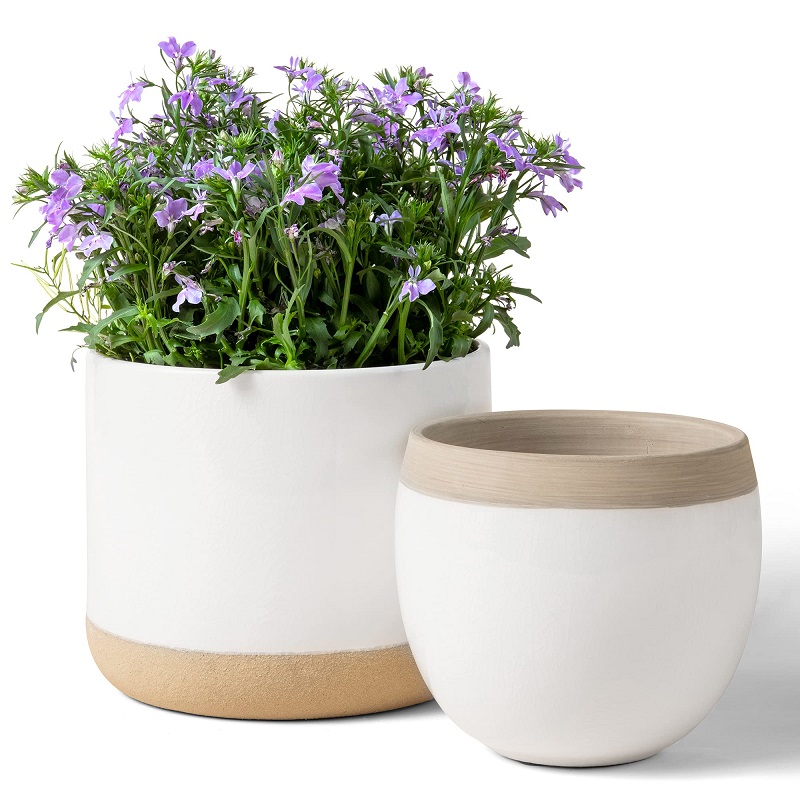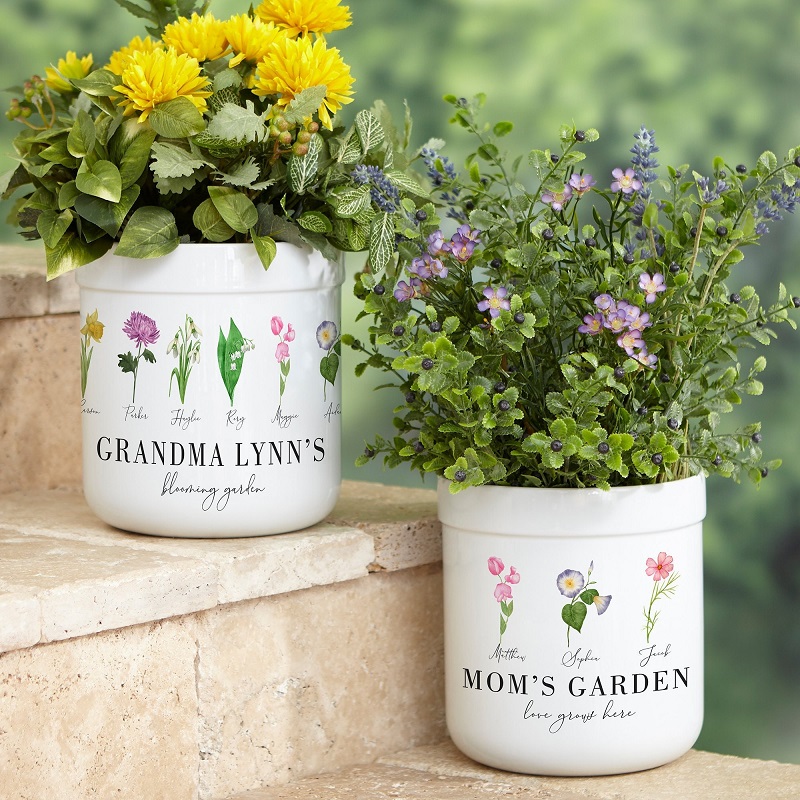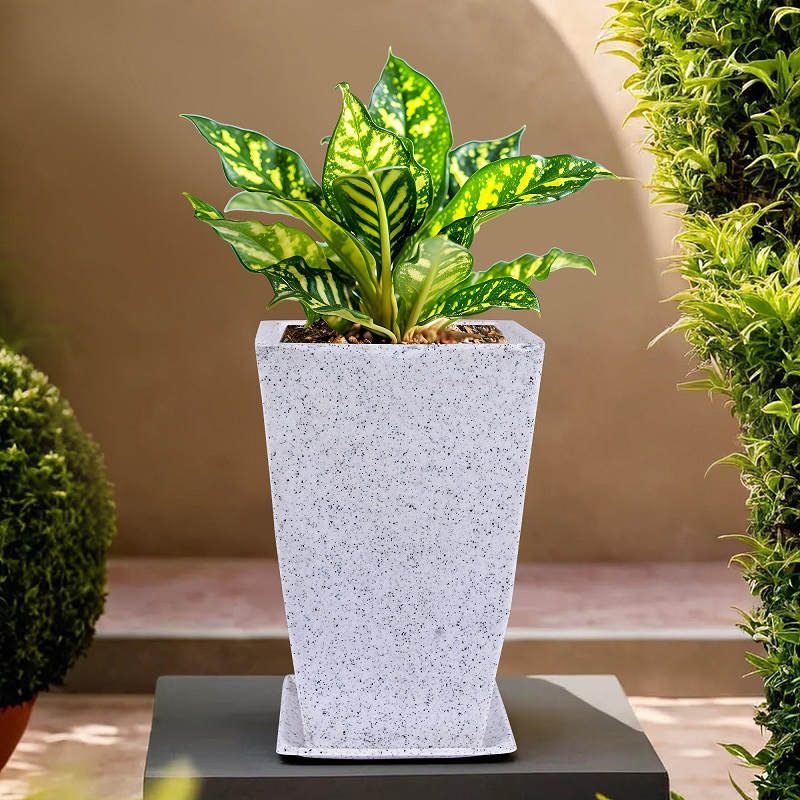Creating and maintaining beautiful flower pots can significantly enhance your outdoor or indoor space, adding vibrant colors and a touch of nature to your environment. This comprehensive guide will walk you through each step, from choosing the right pots and plants to ensuring their ongoing care and maintenance. With detailed instructions and tips, you’ll be equipped to cultivate stunning flower arrangements that thrive and bring joy.
Selecting the Right Flower Pots
Choosing the Material
When selecting flower pots, the material plays a crucial role in the health of your plants and the overall aesthetics of your display. Pots come in various materials, including clay, ceramic, plastic, and metal. Each has its benefits and drawbacks. Clay and ceramic pots are traditional choices that provide excellent drainage but can be heavy and prone to breaking. Plastic pots, on the other hand, are lightweight and resistant to cracking but may not offer the same aesthetic appeal. Metal pots, often used for their modern look, can heat up quickly and may need additional insulation to protect plant roots.
Determining the Size
The size of the flower pot is another critical consideration. A pot that is too small can restrict root growth and lead to a stressed plant, while a pot that is too large may result in overwatering and root rot. Ideally, choose a pot that is 1 to 2 inches larger in diameter than the root ball of your plant. For larger plants, consider using pots that are proportional to the mature size of the plant. Additionally, ensure that the pot has adequate drainage holes to prevent water from accumulating at the bottom, which can lead to root rot.

Preparing Your Flower Pots
Cleaning and Prepping Pots
Before planting, it’s essential to clean and prepare your flower pots. If you’re reusing old pots, scrub them thoroughly with warm, soapy water to remove any dirt, algae, or residues. This step helps prevent the spread of diseases and pests. For pots made of porous materials like clay, soaking them in water for a few hours can help prevent them from drawing moisture away from the soil. If your pot has been used previously, sterilize it by soaking it in a solution of one part bleach to nine parts water. Rinse well and let it dry completely before planting.
Adding Drainage Materials
Proper drainage is crucial for plant health, so ensure your pot has sufficient drainage materials. Place a layer of small stones or gravel at the bottom of the pot before adding soil. This layer helps prevent the drainage holes from becoming blocked and allows excess water to escape, reducing the risk of root rot. Additionally, you can use mesh or landscape fabric to cover the drainage holes, which keeps soil in place while still allowing water to drain out. For pots without drainage holes, consider using a self-watering pot or adding an irrigation system to manage water levels.
Choosing the Right Plants
Matching Plants to Pot Size and Conditions
Selecting plants that match the size of your pot and the environmental conditions is essential for a thriving flower arrangement. For small pots, choose compact plants or dwarf varieties that won’t outgrow their container. Larger pots can accommodate a variety of plants, including shrubs and small trees. Consider the sunlight conditions of your planting area—full sun, partial shade, or full shade—and choose plants that thrive in those conditions. Additionally, take into account the plant’s water and soil requirements to ensure compatibility with your potting mix.
Creating Plant Combinations
Creating visually appealing plant combinations involves considering color, texture, and growth habits. Choose plants with complementary colors to create a harmonious look, or mix contrasting colors for a bold statement. Combining plants with different textures, such as spiky, rounded, or trailing foliage, adds interest and depth to your arrangement. Also, consider the growth habits of your plants—some may spread out while others grow upright. Mixing plants with different growth habits can create a balanced and dynamic display.
Planting Your Flowers
Preparing the Potting Mix
A well-prepared potting mix is crucial for the success of your flower pots. Avoid using garden soil, as it may be too heavy and prone to compaction. Instead, use a high-quality potting mix that is designed for container gardening. Look for a mix that includes ingredients such as peat moss, perlite, and vermiculite, which improve aeration, drainage, and moisture retention. You can also add organic matter like compost to enhance soil fertility. If you prefer, create your own potting mix by combining equal parts peat moss, perlite, and compost.
Planting Techniques
When planting, start by filling your pot with the prepared potting mix, leaving enough space at the top for watering. Gently remove the plant from its nursery container, being careful not to disturb the roots excessively. If the plant has become root-bound, gently loosen the roots to encourage new growth. Place the plant in the pot, ensuring that it sits at the same depth as it was in its previous container. Fill in around the plant with additional potting mix, pressing gently to remove air pockets. Water the plant thoroughly to help settle the soil and ensure good root-to-soil contact.

Watering and Fertilizing
Understanding Watering Needs
Proper watering is essential for the health of your flower pots. The frequency of watering depends on factors such as plant type, pot size, and environmental conditions. As a general rule, water when the top inch of soil feels dry to the touch. Avoid overwatering, as this can lead to root rot and other issues. Ensure that excess water can drain freely from the pot to prevent waterlogging. During hot weather, you may need to water more frequently, while in cooler temperatures, watering may be less frequent.
Applying Fertilizer
Fertilizing your plants provides essential nutrients that may be depleted over time. Choose a balanced, water-soluble fertilizer that contains equal proportions of nitrogen, phosphorus, and potassium. Follow the manufacturer’s instructions for application rates and frequency. Generally, fertilize your flower pots every 4 to 6 weeks during the growing season. Be cautious not to over-fertilize, as this can lead to excessive foliage growth at the expense of flowers or fruit. For organic options, consider using compost tea or slow-release organic fertilizers.
Pruning and Deadheading
Pruning for Health and Shape
Regularly remove dead or diseased foliage to prevent the spread of pests and diseases. Pruning also helps to shape the plant and encourage bushier growth. For flowering plants, cut back spent flowers to promote new blooms and extend the flowering period. Use clean, sharp scissors or pruners to make precise cuts and avoid damaging the plant. Prune according to the specific needs of each plant, as some may require more frequent trimming than others.
Deadheading for Continued Blooming
Deadheading is the process of removing spent flowers to encourage the plant to produce more blooms. Regular deadheading prevents the plant from setting seed and redirects its energy into new flower production. For most flowering plants, simply pinch or cut off the spent flowers just above the first set of healthy leaves or buds. This practice not only improves the plant’s appearance but also promotes a longer and more prolific blooming period. Deadhead plants regularly to keep them looking their best throughout the growing season.
Managing Pests and Diseases
Identifying Common Pests
Flower pots can attract various pests, including aphids, spider mites, and whiteflies. Regularly inspect your plants for signs of pest infestations, such as discolored or deformed leaves, webbing, or tiny insects. Early detection is key to effective pest management. Use insecticidal soap or neem oil to treat minor infestations, and consider introducing beneficial insects like ladybugs to control pests naturally. For severe infestations, you may need to remove affected plant parts or use stronger chemical treatments, following the instructions carefully.

Seasonal Care and Maintenance
Adjusting for Seasonal Changes
Flower pots require different care depending on the season. In the spring and summer, focus on regular watering, fertilizing, and pest management. As temperatures rise, plants may need more frequent watering and additional shading to prevent heat stress. In the fall, prepare your flower pots for cooler weather by reducing fertilization and watering less frequently. For winter, consider moving pots to a sheltered location or using frost protection measures to prevent damage from freezing temperatures.
